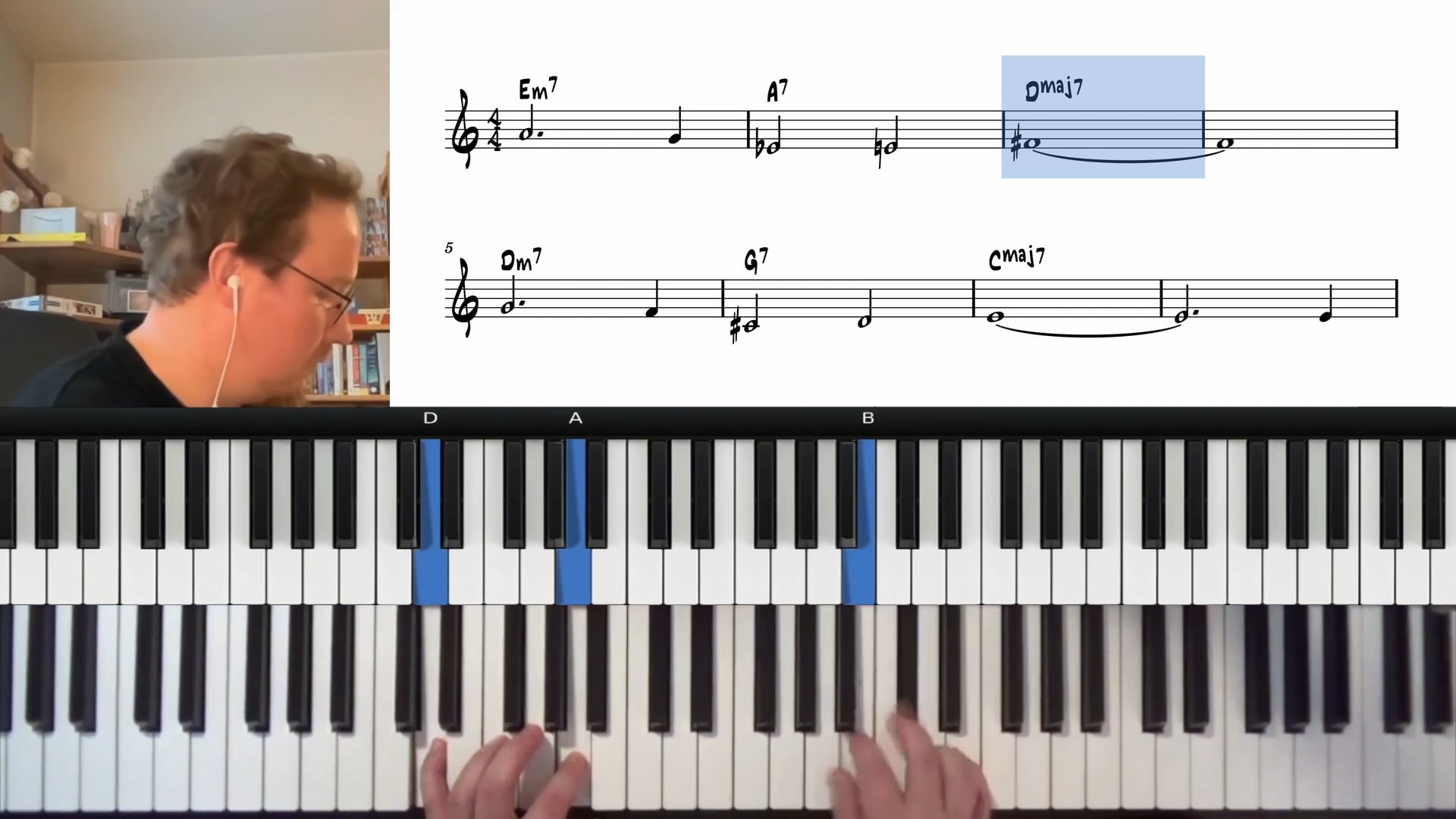
Tuomo Uusitalo
Tuomo is an award-winning pianist, composer, arranger and educator. Having released two albums as a leader, he has established himself in the New York jazz scene and continues touring internationally both as a leader as well as sideman.
Seminar Description
Seminar Description
Jazz Improvisation & Transcription Workshop
Welcome to our jazz improvisation and transcription workshop! In this lesson, we explore the process of transcribing jazz solos and applying them to our own improvisation. By the end of this session, you’ll have a deeper understanding of how to absorb jazz vocabulary from recordings and integrate these melodic ideas into your playing.
The Importance of Jazz Language
Jazz improvisation is not about randomly playing notes; it follows a structured language developed by great musicians over decades. By transcribing and analyzing phrases from masters, we can learn how melodies flow over chord changes and develop a more authentic jazz sound.
Jazz phrases function like words in a language. When combined correctly, they create meaningful musical sentences. By studying these phrases, we internalize the structure of jazz improvisation, making our solos more coherent and expressive.
Transcribing from Recordings
The best way to develop your jazz vocabulary is to transcribe directly from recordings. This involves:
- Listening carefully to a solo line.
- Identifying the notes, rhythms, and phrasing.
- Writing it down or memorizing it by ear.
- Practicing it in different keys.
On the PianoGroove Licks & Lines Library, you can find exercises specifically designed to train your ear and transcription skills. These exercises range from intermediate to advanced levels, focusing on common harmonic progressions like 2-5-1s.
Applying Transcribed Material to Improvisation
Once you’ve transcribed a phrase, the next step is incorporating it into your playing. Here’s how:
- Learn the phrase in multiple keys – This ensures flexibility in different musical contexts.
- Practice using the phrase in tunes – Identify spots in jazz standards where the phrase fits naturally.
- Experiment with variations – Change the rhythm, articulation, or note order while keeping the essence of the phrase.
- Combine phrases – Mix and match different lines to create more fluid solos.
- Play with different tempos – This helps with phrasing, feel, and control over the line.
For example, if you transcribe a great 2-5-1 phrase in C Major, try applying it to a tune like There Will Never Be Another You when you encounter the same harmonic progression.
Expanding Your Improvisation Techniques
Many students struggle to integrate faster note groupings like 16th-note triplets into ballad improvisation. A useful approach is:
- Starting with an 8th-note-based improvisation.
- Gradually increasing note density while maintaining melodic clarity.
- Using scales such as the half-whole diminished scale over dominant chords to create tension and release.
A great way to practice this is looping a simple turnaround (like 1-6-2-5) and slowly incorporating triplets, chromatic passing tones, and bebop enclosures.
Practice Tips
- Start with short phrases – Focus on one small lick at a time instead of trying to transcribe an entire solo.
- Use a metronome – Play transcribed lines at different tempos to internalize the swing feel.
- Transpose to multiple keys – Mastering a phrase in all 12 keys makes it easier to use in real-time improvisation.
- Play along with recordings – Try to match the phrasing and articulation of the original player.
- Incorporate licks into jazz standards – Identify where a transcribed phrase can fit naturally into a tune you are working on.
By consistently practicing transcription and integrating phrases into your solos, you’ll develop a more authentic and personal jazz sound. Check out the Licks & Lines Library on PianoGroove for more transcription exercises and start applying these techniques to your playing today! 🎶








